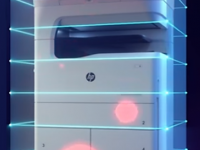 IT Professionals spend most of their working hours trying to keep company information secured from hostile intruders. It’s not hard to imagine what a nightmare it would be to discover someone’s tapped into your engineering group to steal plans you’ve been working on for months. Plans that could include some of your greatest innovations to date.
IT Professionals spend most of their working hours trying to keep company information secured from hostile intruders. It’s not hard to imagine what a nightmare it would be to discover someone’s tapped into your engineering group to steal plans you’ve been working on for months. Plans that could include some of your greatest innovations to date.
As you know, it wasn’t too long ago that you could email live CAD files to project stakeholders with little concern about having them intercepted. Unfortunately, we now live in a world where there’s as many criminal hackers as there are honest, hardworking individuals
I don’t mean to sound the alarm and raise fear levels, but your wide format printer is probably the last place you’d think of leaving a hole in the fence – this is really happening though.
Printer Security Strategy
There’s been times when I’ve met with IT or Ops directors at various companies and posed this simple question to them:
What’s your printer security strategy?
To which I’m usually met with a blank expression or a vague response like “we have everything locked down.”
I hope so. But, just to be on the safe side, you may want to read HP’s White Paper “Keep Your Data Safe.” It does a good job of explaining four areas of printer security.
- Data in transit
- Data in storage
- Intrusion prevention
- Authentication and authorization
I’d be happy to email you a copy (joe.fuller@mastergraphics.com)
While most printer manufacturers are starting to make encrypted hard drives standard as some form of security, they still have a ways to go to provide the tools IT administrators need, especially for those manufacturers that use MS Windows as their printer controller operating system.
Not surprisingly, given their background with PCs and enterprise networks, HP has put a strong emphasis on engineering built-in security tools as standard features for their professional and production-level printers.
Even though it adds slightly to the price, I think this will eventually force other manufacturers to include security in the same way cell phone carriers and ISPs are finally doing. Unwanted robo-calls and viruses should be headed off at a higher level. Once they reach our phone or computer, it’s generally too late to stop their damage or scams.
So, my recommendation is to evaluate your printer security on the network, implement a printer security strategy and include security features as a criteria when evaluating your next printer.
Print away!
jff






